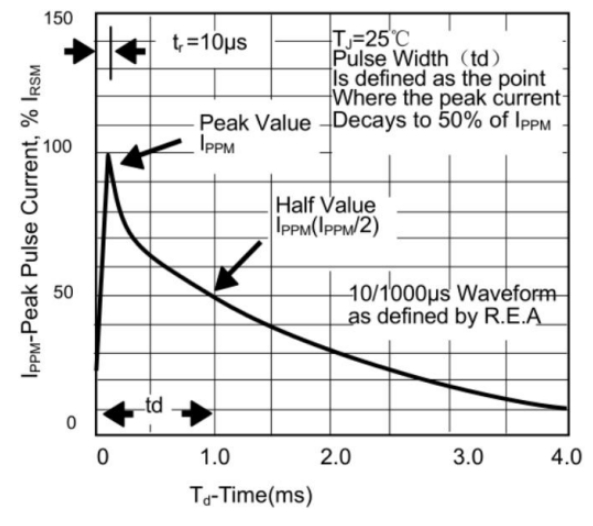Summary
When you’re designing a circuit, a TVS diode acts like a lightning rod. It’s quiet most of the time, but the moment a surge hits, it jumps in to save your sensitive components. The problem is, if you pick the wrong part, it might either fail to protect the circuit or interfere with normal operation. Here are six checkpoints that make selection easier.
📌Working Voltage (VRWM): Don’t Make It Too Sensitive
A TVS should stay out of the way during normal operation. That means its standoff voltage has to be slightly higher than the circuit’s maximum working voltage—just enough to avoid false triggers. But don’t go too high either, or the clamping voltage will rise, and the downstream ICs may not survive the hit.
Rule of thumb: a little higher than your operating voltage, but not by much.
📌 Power Rating (PPPM): The Safety Margin
The rated peak power of a TVS needs to be larger than the maximum surge power your circuit might face. Quick math:
Power = Clamping Voltage (VC) × Peak Current (IPP)
For the same voltage, a larger IPP means the diode can handle more power. If your test waveform isn’t the standard 10/1000 μs but something like 8/20 μs, remember to recalculate.
Tip: always leave some headroom—once a surge exceeds the rating, the device won’t survive.

📌Clamping Voltage (VC): Keep It Below the Weak Spot
VC is the voltage the diode allows through during a surge. It must be lower than what your protected components can tolerate. Naturally, a higher breakdown voltage (VBR) or bigger pulse current (IPP) will push VC higher.
Simple rule: make sure VC < the maximum voltage your ICs or modules can handle.
📌Leakage Current (IR): Small but Not Ignorable
Ideally, you want IR to be as low as possible. Too much leakage increases power loss and can even skew precision signals. Low-voltage TVS parts (under 10 V) usually leak more, so if your circuit can handle it, aim for models rated 10 V or higher.
Note: if your system is very sensitive, stick with ultra-low-leakage parts.
📌Junction Capacitance: The Silent Speed Killer
TVS capacitance can mess with high-speed signals. A large junction capacitance means data lines like USB or HDMI may slow down or distort. Lower-voltage parts often have higher capacitance.
Bottom line: for high-speed or RF lines, choose low-capacitance TVS diodes.
📌Package Size: Bigger Isn’t Always Worse
The package directly affects how much energy a TVS can handle. Larger packages spread heat better and usually survive stronger surges. Of course, PCB space and mechanical limits also matter.
Tip: match the package size with the real surge threat and your layout space.
Final Thoughts
Choosing a TVS diode isn’t about a single number—it’s a balance. Working voltage, clamping ability, power rating, leakage, capacitance, and package all play a role. Keep these six checkpoints in mind, and you’ll avoid the common traps while giving your circuit a reliable layer of surge protection.
Ready to protect your circuits without compromise? Semiware’s TVS diodes offer reliable surge protection, fast availability, and compatibility with top brands like Littelfuse,Vishay. 👇
https://en.semiware.com/product-line/tvs-diode
Don’t wait until a surge damages your equipment—contact us today and let our experts help you pick the perfect TVS solution for your design.👇
Sales29@semiware.com


Comments (0)